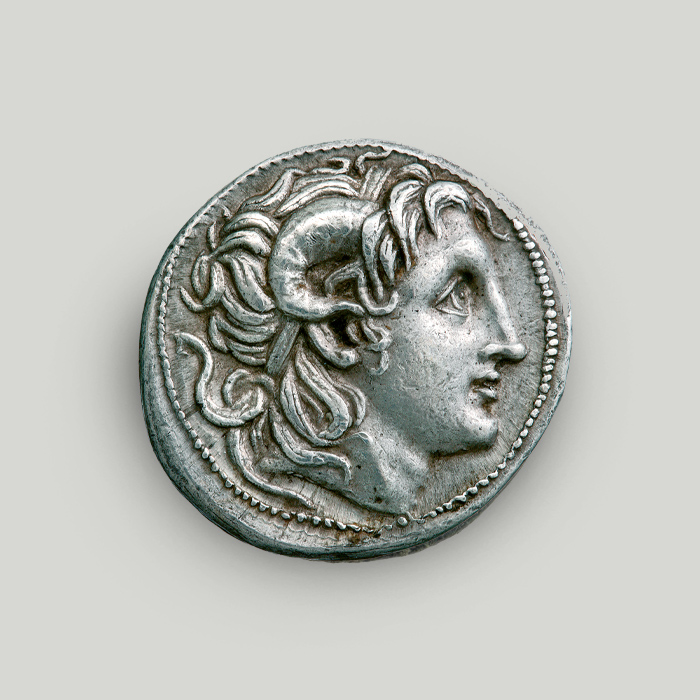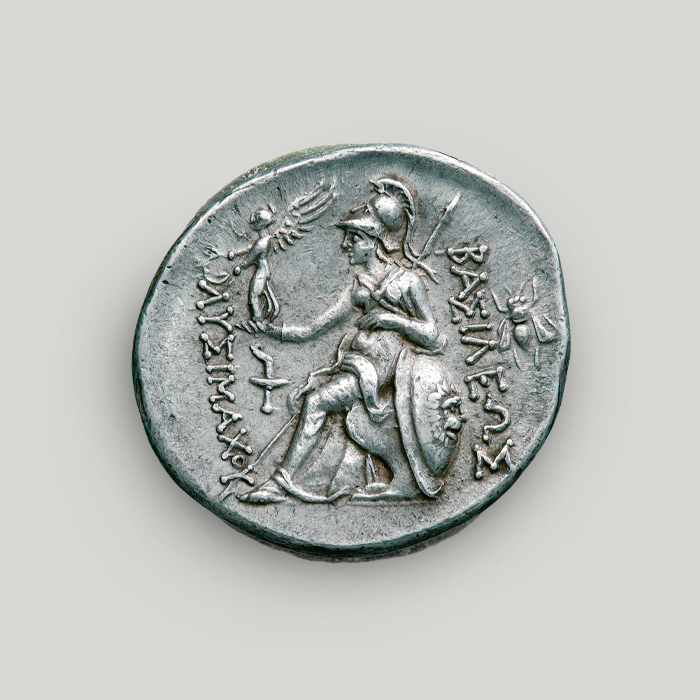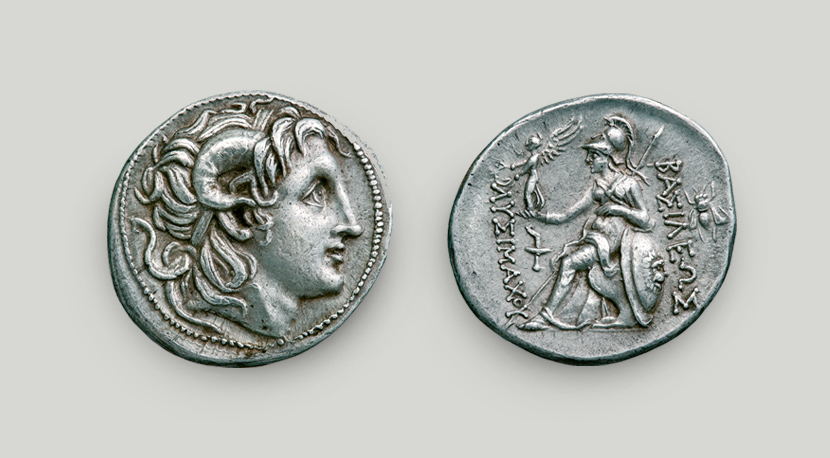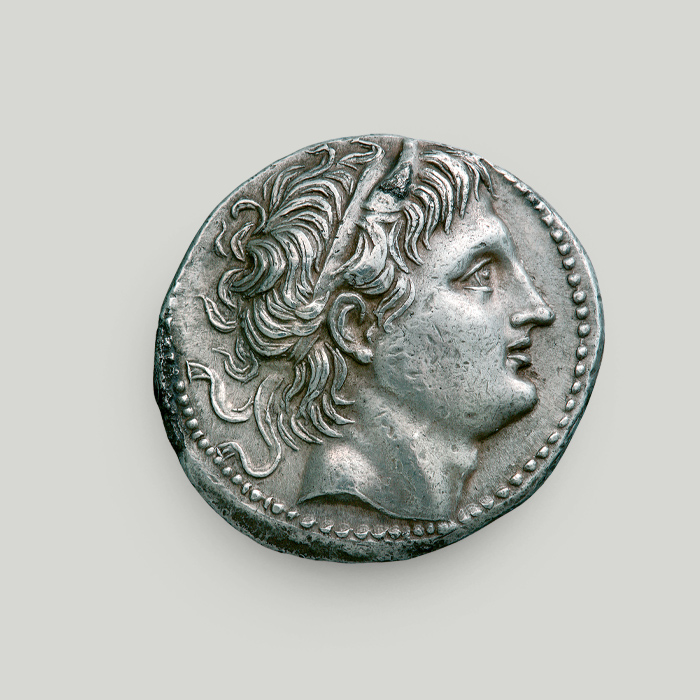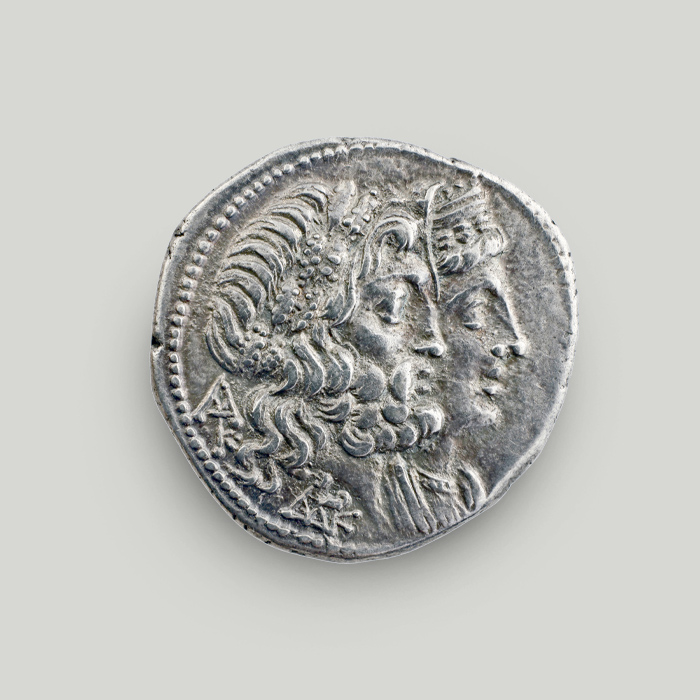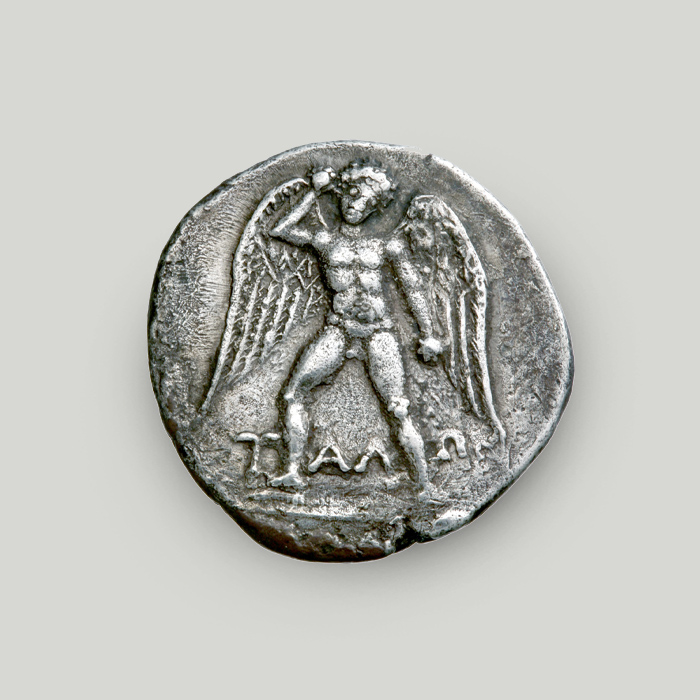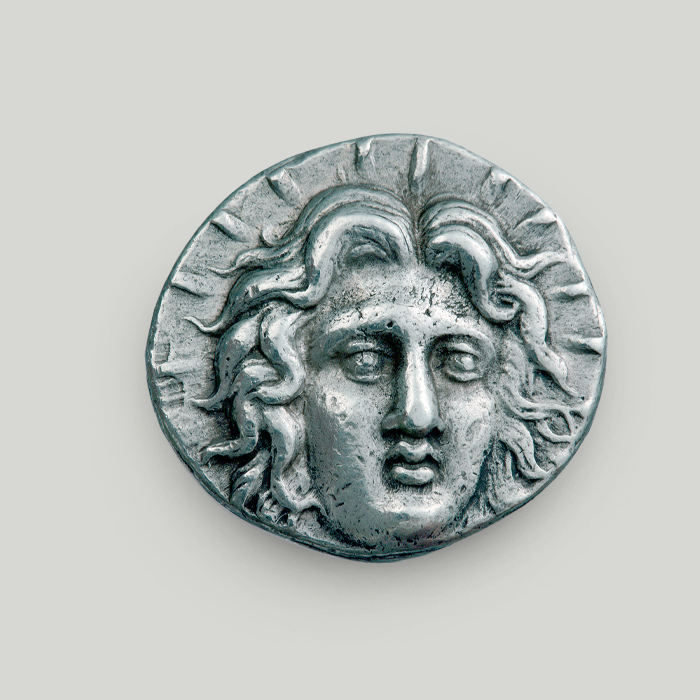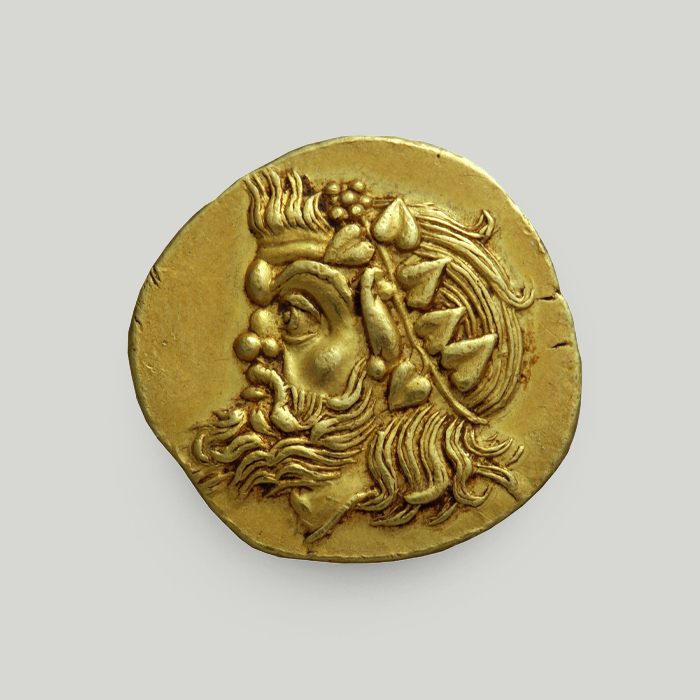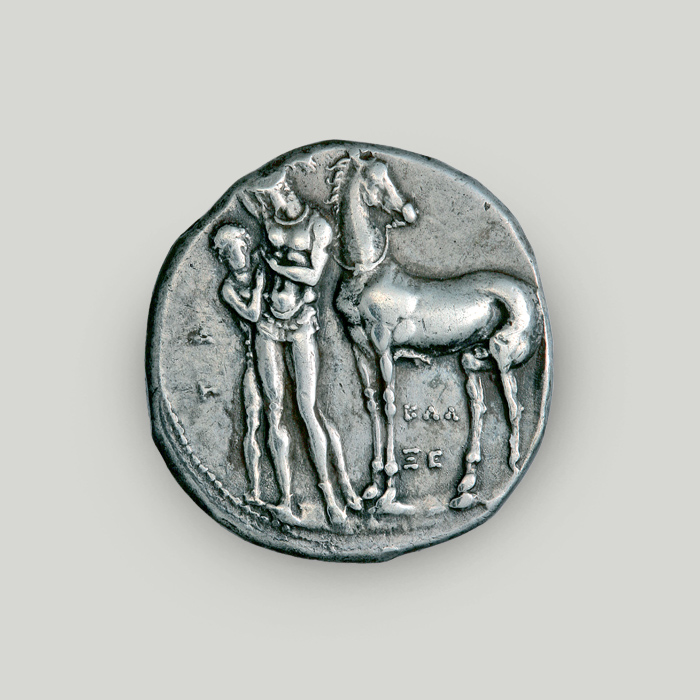Silver tetradrachm of Lysimachus, Thrace
The silver tetradrachm of Lysimachus preserves one of the most impressive depictions of Alexander the Great. It depicts Alexander deified, with ram horns as a symbol of the great Egyptian god Amun. The tetradrachms of Thracian king Lysimachus were issued as of 297 BCE in mass quantities and numerous mints. They were still issued after Lysimachus’ death.
Obverse
Head of Alexander the Great with the ram horns of Amun (identified with Zeus in Greece as Zeus-Ammon), in profile facing right, within a circular dotted border.
Reverse
The goddess Athena enthroned. Her left elbow rests on a shield bearing a lion head as an episema (identifying design). Her right hand is extended forward, holding a winged Nike (Victory) that crowns Lysimachus’ name in the legend.
There is a torch under the goddess’ right arm and a spear behind her. A bee is visible at the right-hand side of the field. The legend reads ΛΥΣΙΜΑΧΟΥ ΒΑΣΙΛΕΩΣ (of king Lysimachus).
Alexander’s empire broken up
Alexander the Great died in 323 BCE in Babylon. His sudden death was the cause of great unrest. The generals running his army had to decide how the empire would be ruled.
His successors, known as the Diadochi, continued to fight among them for a long time and over every single inch of land.
In the end, the vast empire was split into regions. These regions became the new, independent kingdoms.
The significance of coinage for the Diadochi
Issuing coins was one of the priorities of Alexander’s successors. Except its apparent impact on finance, this practice was also important as an act of political propaganda.
The Diadochi chose types associated with Alexander. Such types:
- Confirmed the legitimacy of succession.
- Reminded people of the successors’ descent in case their rule were disputed or challenged by another king.
- Established the authority of the Diadochi.
Lysimachus as king of Thrace
Lysimachus was one of the Diadochi. He came from Thessaly and was one of Alexander’s bodyguards and a high-ranking official.
Following Alexander’s death and the ensuing conflicts, the satrapy of Thrace and the regions around the Black Sea came under his rule.
In 306 BCE he was crowned king of Thrace and had founded his namesake city of Lysimacheia 3 years earlier. He significantly expanded the kingdom. He fought his last battle in Kouropedion in 281 BCE. There, he was defeated by the king of Syria Seleucus I Nicator and killed. The kingdom of Thrace was no more.
Lysimachus coinage
Lysimachus issued splendid coins which do not bear his likeness. Instead, they preserve some of the most impressive depictions of Alexander the Great.
Specifically, the obverse of the silver tetradrachms depicts the late king of Macedon deified, with the ram horns of the Egyptian god Amun.
This depiction is based on a statue made by the sculptor Lysippos. The portrait underlines Alexander’s character, virtue and bravery. Alexander himself had commissioned Lysippos to create this representation.
The reverse depicts the goddess Athena. Lysimachus chose to honour her as his patron and protector.
The tetradrachms of Lysimachus were issued as of 297 BCE in mass quantities and numerous mints. They were still issued after Lysimachus’ death.
Amun and Alexander the Great
During his campaign, Alexander the Great visited the oracle and temple of Amun in the Siwa Oasis. He paid his respects to the temple, where the priests pronounced him a god and recognised him as a legitimate Pharaoh of Egypt.
Amun was associated with the ram, and the so-called horns of Amun became his symbol. In the type of the silver tetradrachm, Alexander the Great is portrayed with these curved horns, which suggest he is depicted as a god.
Fractions and etymology
As suggested by its name, the tetradrachm equalled 4 drachmas. Each drachma equalled 6 obols.
Before the invention of coins, people used iron spits of 1-1.5 meters in length for their daily transactions.
The spits was called ovelos, and 6 of them were considered a standard handful. This handful was later dubbed “drachma”, as it could be grasped (drattomai in Ancient Greek) in a person’s fist.
When coins started to circulate, the word “ovelos” (the previously used spits) changed to “ovolos” (“obol” in modern numismatics) and was used to denote the value once held by 1 spits, i.e., 1/6 of a drachma.
The coin in our publications
The silver tetradrachm of Lysimachus is mentioned in the book Alexander the Great. From Macedonia to the Edge of the World, edited by Dr Dimitra Tsangari. The edition refers to the history of Alexander the Great through his coinage and its effect on the ancient world even after his death. It showcases 218 coins with detailed explanatory texts.
Buy the publication Alexander the Great. From Macedonia to the Edge of the World on the Alpha Bank e-shop.
The Alpha Bank Numismatic Collection is not open to the public.
Research visits to the Numismatic Collection can be organised upon request.
Contact us to book your visit.
